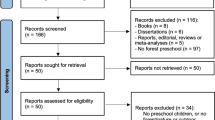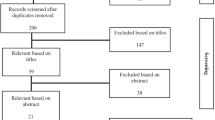Abstract
School environment may have an impact on children’s health, but few studies have focused on indoor comfort factors such as temperature, humidity, and noise in relation with potential effects on children’s health. Our cross-sectional study used data from the European Schools Indoor Pollution and Health Observatory Network in Europe (SINPHONIE) project to assess children’s allergy, asthma-like symptoms, and flu-like symptoms in relation with classroom comfort and environmental factors. The study used self-reported data from three questionnaires to identify classroom conditions and student health outcomes for 280 students. We used backwards variable selection and unconditional logistic regression to assess the outcome-environment relationship while controlling for demographics, family history of allergy, and home exposures. We found increased risks for allergy and flu-like symptoms associated with hot classrooms in the heating season, increased risks for asthma-like symptoms associated with noisy classrooms, and a protective effect for allergy associated with good outdoor air quality. Romanian classrooms rely on natural ventilation, which may contribute to increased temperature and humidity in the heating season. Further research warrants the use of SINPHONIE’s measurement data to validate our findings.
Similar content being viewed by others
References
Asher MI, Montefort S, Björkstén B, Lai CK, Strachan DP, Weiland SK, Williams H (2006) Worldwide time trends in the prevalence of symptoms of asthma, allergic rhinoconjunctivitis, and eczema in childhood: ISAAC phases one and three repeat multicountry cross-sectional surveys. Lancet 368:733–743. https://doi.org/10.1016/S0140-6736(06)69283-0
Bearer CF (1995) Environmental health hazards: how children are different from adults. Futur Child 5:11–26
Bockelbrink A, Willich SN, Dirzus I, Reich A, Lau S, Wahn U, Keil T (2008) Environmental noise and asthma in children: sex-specific differences. J Asthma 45:770–773. https://doi.org/10.1080/02770900802252127
Chatzidiakou L, Mumovic D, Summerfield AJ (2012) What do we know about indoor air quality in school classrooms? A critical review of the literature. Intell Build Int 4:228–259
Corgnati SP, Filippi M, Viazzo S (2007) Perception of the thermal environment in high school and university classrooms: subjective preferences and thermal comfort. Build Environ 42:951–959. https://doi.org/10.1016/j.buildenv.2005.10.027
Csobod É, Annesi-Maesano I, Carrer P, Kephalopoulos S, Madureira J, Rudnai P, Fernandes E de O, Barrero-Moreno J, Beregszászi T, Hyvärinen A, Moshammer H, Norback D, Páldy A, Pándics T, Sestini P, Stranger M, Täubel M, Varró MJ, Gabriela-Ventura E, Viegi G (2014) SINPHONIE – Schools Indoor Pollution and Health Observatory Network in Europe - Final Report
Gao J, Wargocki P, Wang Y (2014a) Ventilation system type and the resulting classroom temperature and air quality during heating season. Lect Notes Electr Eng 261:203–25l. https://doi.org/10.1007/978-3-642-39584-0_23
Gao J, Wargocki P, Wang Y (2014b) Ventilation system type, classroom environmental quality and pupils’ perceptions and symptoms. Build Environ 75:46–57. https://doi.org/10.1016/j.buildenv.2014.01.015
Ising H, Ising M (2002) Chronic cortisol increases in the first half of the night caused by road traffic noise. Noise Health 4:13–21
Ising H, Lange-Asschenfeldt H, Lieber G-F, Moriske H-J, Weinhold H (2004) Exposure to traffic-related air pollution and noise and the development of respiratory diseases in children. J Child Health 2:145–157. https://doi.org/10.1080/15417060490906477
Kephalopoulos S, Csobod E, Bruinen de Bruin Y, de Oliveira Fernandes E, Carrer P, Mandin C, Stranger M, Annesi-Maesano I, Giacomini M, Koudijs E, ..., Kazmarová H, Jajcaj M, Vasiliki Assimakopoulos HS, Bartzis J, Assimakopoulos, MN, Gurzau ES, Kalimeri K, Neamtiu I, Van den Hazel P, Montefort S, Hadjipanayis A, Cani E (2014) Technical Report: Guidelines for healthy environments within European schools. https://doi.org/10.2788/89936
Kielb C, Lin S, Muscatiello N, Hord W, Rogers-Harrington J, Healy J (2015) Building-related health symptoms and classroom indoor air quality: a survey of school teachers in New York state. Indoor Air 25:371–380. https://doi.org/10.1111/ina.12154
Landrigan PJ, Suk WA, Amler RW (1999) Chemical wastes, children’s health, and the superfund basic research program. Environ Health Perspect 107:423–427. https://doi.org/10.1289/ehp.99107423
Lercher P, Evans GW, Meis M, Kofler WW (2002) Ambient neighbourhood noise and children’s mental health. Occup Environ Med 59:380–386. https://doi.org/10.1136/oem.59.6.380
Lin S, Kielb CL, Reddy AL, Chapman BR, Hwang S-A (2012) Comparison of indoor air quality management strategies between the school and district levels in New York state. J Sch Health 82:139–146. https://doi.org/10.1111/j.1746-1561.2011.00677.x
Linares C, Díaz J, Tobías A, de Miguel JM, Otero A (2006) Impact of urban air pollutants and noise levels over daily hospital admissions in children in Madrid: a time series analysis. Int Arch Occup Environ Health 79:143–152. https://doi.org/10.1007/s00420-005-0032-0
Meklin T, Husman T, Vepsäläinen A, Vahteristo M, Koivisto J, Halla-Aho J, Hyvärinen A, Moschandreas D, Nevalainen A (2002) Indoor air microbes and respiratory symptoms of children in moisture damaged and reference schools. Indoor Air 12:175–183
Mendell MJ, Heath GA (2005) Do indoor pollutants and thermal conditions in schools influence student performance? A critical review of the literature. Indoor Air 15:27–52. https://doi.org/10.1111/j.1600-0668.2004.00320.x
Mi Y-H, Norbäck D, Tao J, Mi Y-L, Ferm M (2006) Current asthma and respiratory symptoms among pupils in shanghai, China: influence of building ventilation, nitrogen dioxide, ozone, and formaldehyde in classrooms. Indoor Air 16:454–464. https://doi.org/10.1111/j.1600-0668.2006.00439.x
Norbäck D, Nordström K (2008) Sick building syndrome in relation to air exchange rate, CO2, room temperature and relative air humidity in university computer classrooms: an experimental study. Int Arch Occup Environ Health 82:21–30
Norbäck D, Smedje G (1997) Aerosols, subjective indoor air quality and asthma in schools. Ann Occup Hyg 41:689–694
Oluwole O, Kirychuk SP, Lawson JA, Karunanayake C, Cockcroft DW, Willson PJ, Senthilselvan A, Rennie DC (2016) Indoor mold levels and current asthma among school-aged children in Saskatchewan, Canada. Indoor Air 27:311–319
Reinikainen LM, Jaakkola JJK (2003) Significance of humidity and temperature on skin and upper airway symptoms. Indoor Air 13:344–352. https://doi.org/10.1111/j.1600-0668.2003.00155.x
Rufo JC, Madureira J, Paciência I, Aguiar L, Teixeira JP, Moreira A, Fernandes EDO (2016) Indoor air quality and atopic sensitization in primary schools: a follow-up study. Porto. Biom J 1:142–146. https://doi.org/10.1016/j.pbj.2016.07.003
Sharpe RA, Bearman N, Thornton CR, Husk K, Osborne NJ (2015) Indoor fungal diversity and asthma: a meta-analysis and systematic review of risk factors. J Allergy Clin Immunol 135:110–122. https://doi.org/10.1016/j.jaci.2014.07.002
Stark PC, Burge HA, Ryan LM, Milton DK, Gold DR (2003) Fungal levels in the home and lower respiratory tract illnesses in the first year of life. Am J Respir Crit Care Med 168:232–237. https://doi.org/10.1164/rccm.200207-730OC
Toyinbo O, Matilainen M, Turunen M, Putus T, Shaughnessy R, Haverinen-Shaughnessy U (2016) Modeling associations between principals’ reported indoor environmental quality and students’ self-reported respiratory health outcomes using GLMM and ZIP models. Int J Environ Res Public Health 13:385. https://doi.org/10.3390/ijerph13040385
Turunen M, Toyinbo O, Putus T, Nevalainen A, Shaughnessy R, Haverinen-Shaughnessy U (2014) Indoor environmental quality in school buildings, and the health and wellbeing of students. Int J Hyg Environ Health 217:733–739. https://doi.org/10.1016/j.ijheh.2014.03.002
US EPA (2009) Indoor Air Quality Tools for Schools. Reference Guide. United States Environ. Prot. Agency. Available from: http://files.eric.ed.gov/fulltext/ED511665.pdf. Accessed 29 Sept 2017
Van Kamp I, Davies H (2013) Noise and health in vulnerable groups : a review. Noise Health 15:153–159
Acknowledgements
This work was supported by SINPHONIE (Schools Indoor Pollution and Health–Observatory Network in Europe) project carried out under contract for the European Commission (contract SANCO/2009/c4/04) and funded by the European Parliament. The content is solely the responsibility of the authors and does not necessarily represent the official views of the funders. The funders played no role in the study design, data collection, analysis and interpretation, in the writing of the report, or in the decision to submit this article for publication.
We would like to thank the participants, whose generous time and effort made this study possible.
Author information
Authors and Affiliations
Corresponding author
Ethics declarations
All participants provided written informed consent prior to study participation. In case of children, the informed consent was given by their parents.
Funding
This work was supported by SINPHONIE (Schools Indoor Pollution and Health–Observatory Network in Europe) project carried out under contract for the European Commission (contract SANCO/2009/c4/04) and funded by the European Parliament. The content is solely the responsibility of the authors and does not necessarily represent the official views of the funders. The funders played no role in the study design, data collection, analysis and interpretation, in the writing of the report, or in the decision to submit this article for publication.
Conflict of interest
The authors report no other conflict of interest. The authors alone are responsible for the content and writing of the paper.
Additional information
Responsible editor: Philippe Garrigues
Rights and permissions
About this article
Cite this article
Palumbo, J.R., Lin, S., Lin, Z. et al. Assessing associations between indoor environment and health symptoms in Romanian school children: an analysis of data from the SINPHONIE project. Environ Sci Pollut Res 25, 9186–9193 (2018). https://doi.org/10.1007/s11356-018-1568-3
Received:
Accepted:
Published:
Issue Date:
DOI: https://doi.org/10.1007/s11356-018-1568-3




